Wilderness Retreats
Solitude, style and scenery are all wrapped up in a neat package at these wilderness retreats, where architecture blends seamlessly with the environment, says Ian Belcher
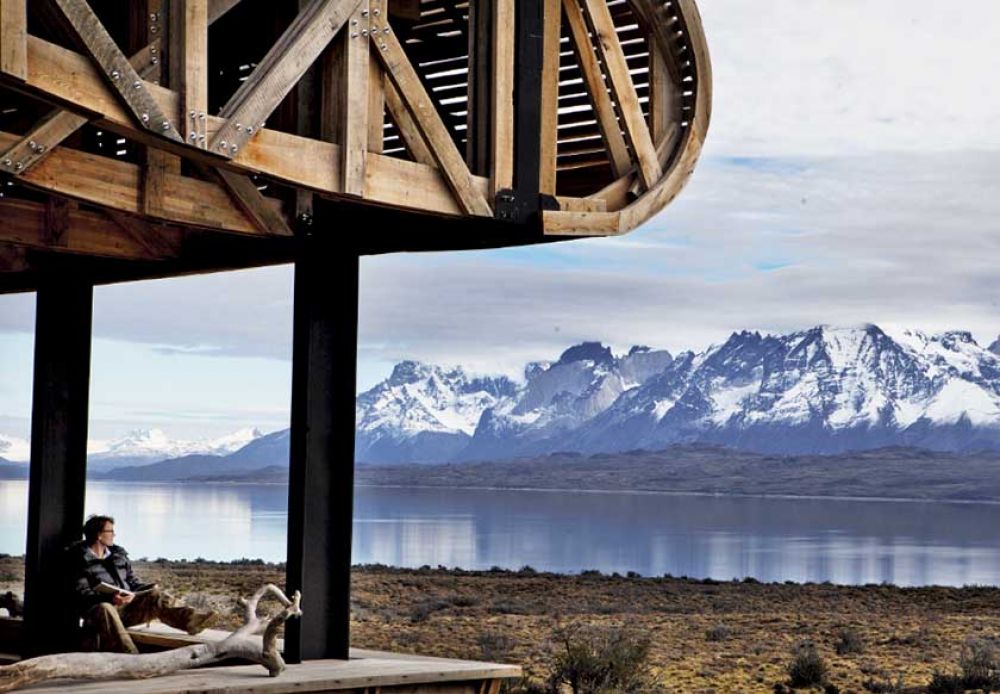
Solitude, style and scenery are all wrapped up in a neat package at these wilderness retreats, where architecture blends seamlessly with the environment, says Ian Belcher
There must be something in the South American air. In a region that pioneered cutting-edge wilderness architecture, the trick has been repeated with the exquisite curves of this hotel and spa. Sitting just outside Torres del Paine National Park, from where it gazes across Lake Sarmiento towards dramatic mountain peaks, Tierra Patagonia emerges and folds back into the hillside; an organic, low-level wave that almost vanishes into the massive landscape. Architect Cazú Zegers refers to it as a ‘respectful’ and ‘poetic’ dialogue with nature, yet with the geometry of a plane fuselage to counter savage winds. But the hotel is about content as well as form. While anchored with stone ramps it’s almost entirely covered in lenga wood that will develop the silvery weather-beaten finish of local wool-drying sheds. Despite the elongated shape, its interiors are designed to provide small-scale intimacy, with 40 rooms lining a long wing that separates the spectacular spa and pool from communal areas, with memorable views through panoramic windows. With subtly lit spaces enhanced by hand-crafted Chilean furniture and textiles, Tierra provides an extraordinary base for Patagonian adventures.
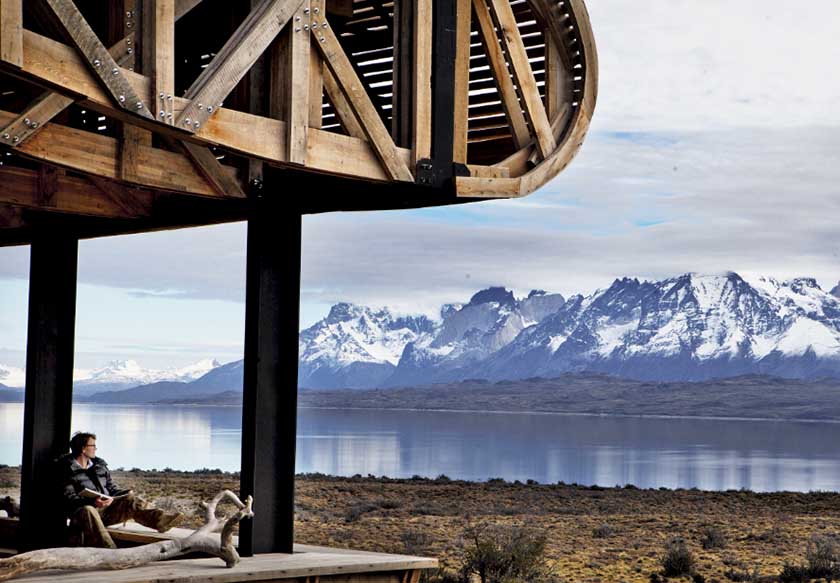
Three full-board nights, plus excursions, from £1,580pp. http://tierrahotels.com
Remember people, it’s about the journey as well as the destination. To reach Alila Jabal Akhdar, 2.5 hours from Oman’s capital, Muscat, head deep into the Al Hajar Mountains, with a final 30km drive up slaloming switchbacks. The reward? A welcome 15C drop from the coast’s heat, exhilarating views into a plunging chasm 2,000m above sea level and a unique 86 suite and villa hotel. Influenced by traditional Omani architecture, Alila Jabal Akhdar harnesses contemporary design and eco-technology. Its ophiolite rock buildings blend seamlessly into the ochre and cappuccino landscape, while the colourful interiors reflect local crafts from ornaments and Bahla pottery to fort-like timber doors. Jabal Akhdar’s baronial lobby sports a huge fireplace and rose patterned decoration, nodding to the region’s famous damask flowers, while the infinity pool vanishes into the lunar landscape. Add in a dreamy spa, ‘golden age’ Arabic cuisine (when trade routes first brought food from the Mediterranean and Persia) and excursions from a concierge team that personalise your trip, and this is the antithesis of explorer Wilfred Thesiger’s hair-shirted travels in the region.

B&B doubles from £295, http://alilahotels.com
Take one generous dose of style and a super-sized measure of glorious isolation. Stir thoroughly. You’ve just created Pumphouse Point. The central Tasmanian hotel takes industrial chic to new heights with the conversion of two art deco buildings – one sitting in the middle of brooding Lake St Clair at the end of a 250m concrete flume – wrapped in over 1.5 million hecatres of Unesco-listed wilderness. It’s seriously remote and gobsmackingly photogenic. Built during the Second World War to carry Australia’s deepest freshwater to nearby Tarraleah Power Station – a project that never bore fruit – the redundant structures have been reincarnated as a tranquil 18-room hotel by Simon Currant, the nature travel entrepreneur behind Cradle Mountain Lodge. Most of the accommodation sits in the three-storey concrete Pumphouse above the lake, with its curved glass west wall facing the mountains, described by one of its architects, Peter Walker, as a ‘cathedral streaming with light’. By designing the suites to line its outer wings, either side of a central lounge, he has left uninterrupted views along the flume and through the building. Communal spaces blend chunks of Tasmanian oak and exposed pipes, while bedrooms are slathered in smoother veneers and have bathrooms with glossy black tiles and brass and copper fittings. The less dramatic Shorehouse has six linear suites, some with memorable lake panoramas and floor-to-ceiling windows. It also houses a back- to-basics, timber-toned restaurant – reminding you that for all the design and comfort, you really are in what Aussies call the ‘back of beyond’.
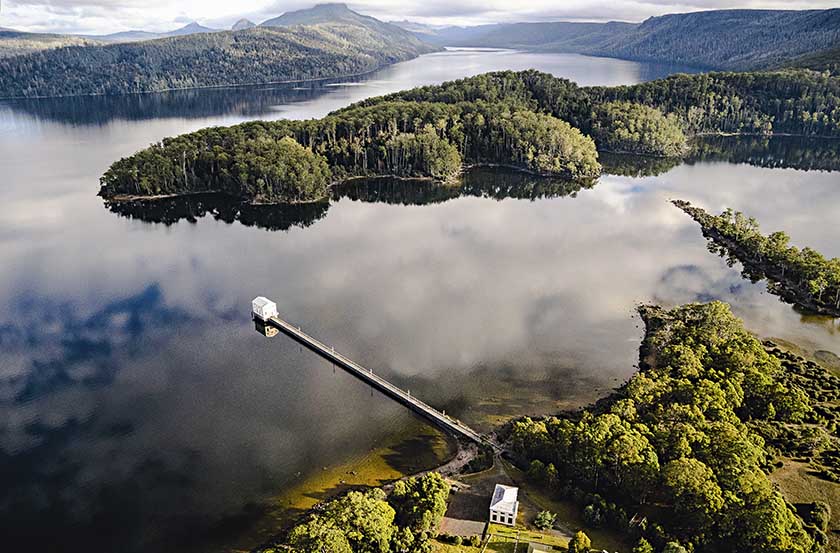
B&B doubles from £137. http://pumphousepoint.com.au
Norman Foster doesn’t do prisons, but if he did they’d resemble Fogo Island Inn – the X-shaped four-storey hotel on the wind- blasted coast of remote Fogo Island. Set in a craggy bay or ‘outport’ of Newfoundland, its dazzling modernity conceals 400-year-old roots, continuing a local tradition of building houses on stilts. Leaving little impact on the community, it also harnesses rainwater and channels energy from solar panels into areas like underfloor heating. The 29-suite hotel has colourful interiors created by Fogo craftspeople, and design fans will adore its rooftop hot tubs, gallery displaying works by international guest artists and the restaurant with double-height windows overlooking the Atlantic – the perfect eyrie to spot migrating whales and flotillas of icebergs carved by Greenland’s coastal glaciers.
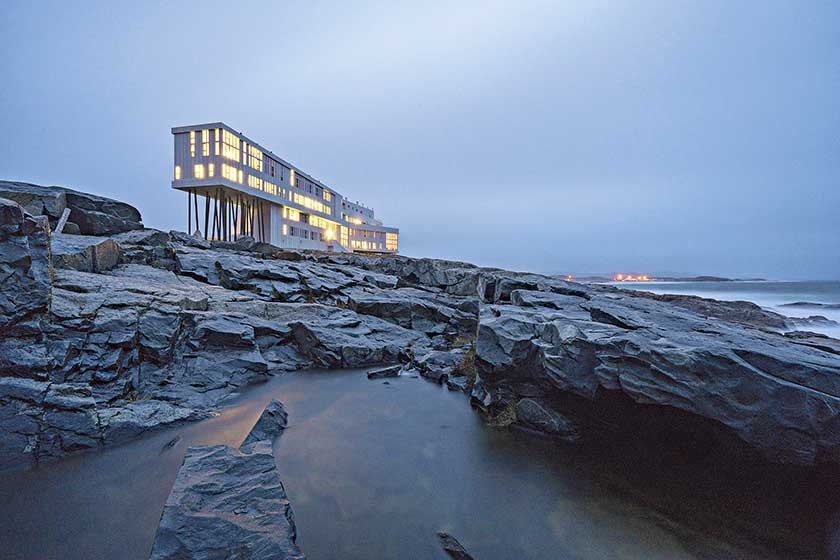
Doubles from £472. http://fogoislandinn.ca
Prepare to witness a heartwarming Icelandic renaissance drama. The Ion hotel – a nod to the area’s geothermal energy and high-voltage Northern Lights displays – has been alchemized from the abandoned staff quarters of a former power plant. Spiking out of the face of Hengill volcano, the striking glass-fronted box appears to advance across the mottled, gnarled lava plain on slanted stilt legs: a brutalist yet strangely organic element in the wilderness only 35km east of Reykjavik. Inside, Ion ticks every box for clean contemporary Nordic style, with 45 rooms displaying exposed concrete walls, animal throws on wire chairs and huge images of Icelandic horses. There’s a show-stopping bar with white angular walls, vast floor-to-ceiling windows and wooden floors too. But perhaps most memorable is the Lava Spa’s outdoor pool surrounded by concrete pillars, and otherworldly views of white-tipped mountains and volcanoes carpeted with ochre earth and green moss. Naturally, this being Iceland, the Ion boasts fabulous eco- credentials, with sinks forged from recycled tyres, furniture from recycled wood, and fair trade links with local farmers. It all makes an ideal base for outdoor adventures, including diving in Thingvellir National Park where you can simultaneously touch the walls of two tectonic plates.
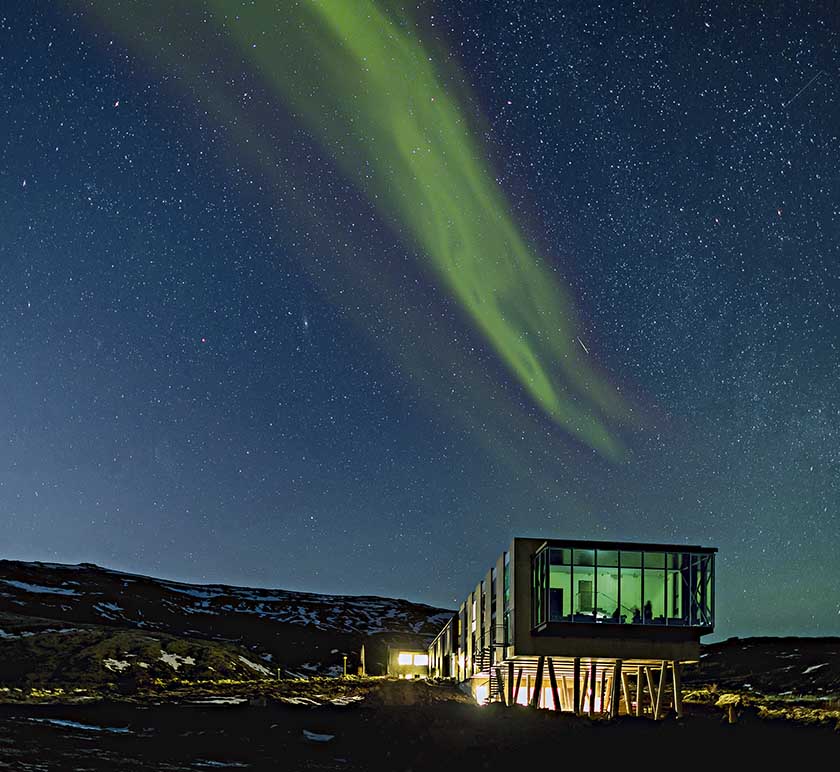
Doubles from £245. http://ioniceland.is
Stay in this elegant, pared-back slice of modernism and what will you remember? The dazzling, unrelenting sunlight that surrenders to a salmon pink dusk and blue grey evening? The extraordinary rock formations? Or the landscape’s immense scale? Quite possibly all three. What it won’t be, however, is the exquisite architecture. Amangiri won’t mind. In fact, the remote hideaway, swaddled by the luminous canyons of southern Utah, will be delighted. It’s not designed to showboat or to dominate its setting. Its whole raison d’être – besides offering ridiculously chic, eye-wateringly expensive desert adventure – is to blend into the epic surroundings of Canyon Point. It succeeds. Brilliantly. Partly due to its muted stone hues, partly to its proportions, perfectly matched to the awe-inspiring surroundings 40km from the nearest civilization. It’s a fine base for exploring the Grand Circle containing the likes of Bryce Canyon, Zion National Park and the Grand Canyon. Its 34 suites, stretching out below an escarpment either side of a central pavilion, mix linear interiors with natural materials from white stone floors and concrete walls to timber and blackened steel fittings. Each has an outdoor lounge with fireplace and windows that frame sweeping views worthy of a Hollywood western. The vast spa has clean, symmetrical lines, sun-washed terraces and divine slabs of reflective water – offering therapies influenced by Navajo traditions. It’s not its most striking feature, however. That’s surely the swimming pool: a ribbon of emerald water, wrapped around the cliff in a sunken courtyard. It’s seriously beautiful.
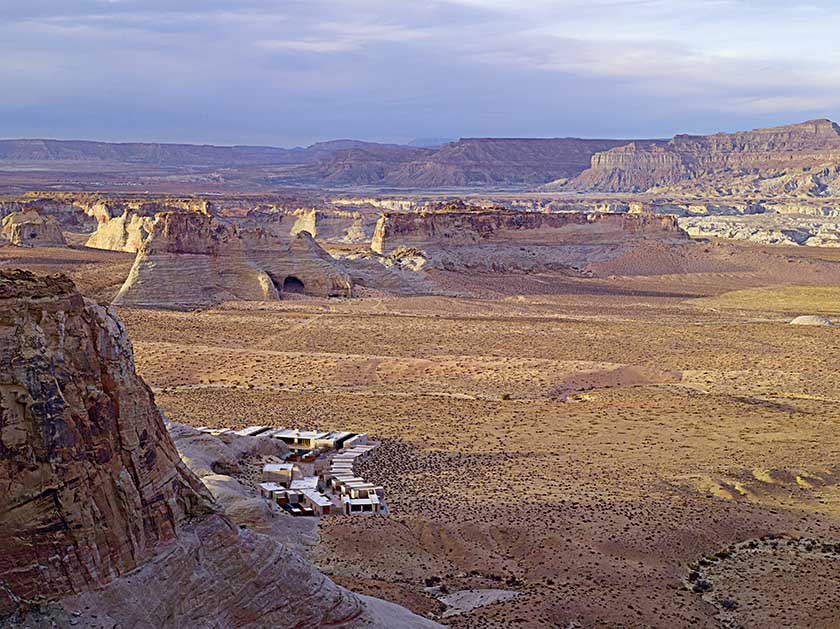
Full- board doubles from £1,455. amanresorts.com
If you’re very fortunate – and sharp-eyed – on your safari, you may spot the elusive creature that shaped the design of Sandibe’s gorgeous lodge. Its sinuous curling main pavilion mimics the sleek outline of the pangolin (a ‘scaly anteater’), with overlapping roof shingles echoing the mammal’s plate-like body armour. Beneath the elevated viewing deck, a lantern-lit enclosure is ringed by logs of decreasing size, recreating the tail bone. Inside, the ceiling soars and twists, creating a grand sense of scale, while sucking in dazzling light and horizon views. Compared with traditional lodges and their ethnic-kitsch vibe, this is brilliantly inventive, gloriously stylish and merges effortlessly into a forest canopy of wild palms and gnarled figs. It’s not the only influence drawn from local wildlife. Sandibe’s 12 serene suites, all with plunge pools and fireplaces, sit above the papyrus-lined creeks like weaver birds’ nests. Their mellow interiors reflect their home location with copper-clad mekoro (tree canoes), carved wood tables and patterned baskets. Avert your eyes from architecture that raises the aesthetic bar for wilderness lodges, and this is stellar safari territory. Not just the world’s biggest elephant and buffalo concentrations, but bags of predators including endangered wild dogs and, of course, those wonderfully inspirational pangolin.
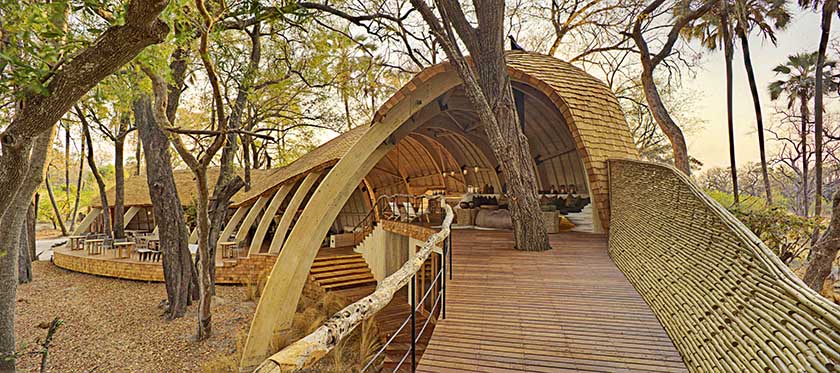
Six nights, full-board, from £2,695pp. andbeyond.com
When you announce yourself as ‘a new step in the evolution of luxury eco-adventure in the Galapagos Islands’ you’d better have the ammunition to back up your claim. Pikaia Lodge – perched atop an extinct volcano on Santa Cruz island in the heart of the Ecuadorian archipelago – does. It really does. Breaking away from the confines of traditional cruise trip visits, it offers a classy, super- contemporary base for daily forays to other spots in the Galápagos. Its 14 rooms and suites, their walls and dark wood interiors washed with sparkling Pacific light through floor-to-ceiling windows, offers memorable widescreen views of everything from the cyan ocean to dry savannah and volcanoes garlanded with mist. It has a fabulous infinity pool, tranquil spa and Evolution Restaurant with suitably Darwinesque artwork adorning the refined space. But Pikaia is about more than style. It’s also about substance. The lodge, built with recycled steel, Ecuadorian teak and natural travertine, is as green as a Galápagos turtle. Its owners replanted 12,000 endemic trees on degraded farmland, attracting indigenous birds and wild roaming giant tortoise (it has its own reserve), while state-of-the-art technology generates drinking water, treats sewage and minimizes energy consumption. As we said, that bold self- promotion was no idle boast. It was spot on.
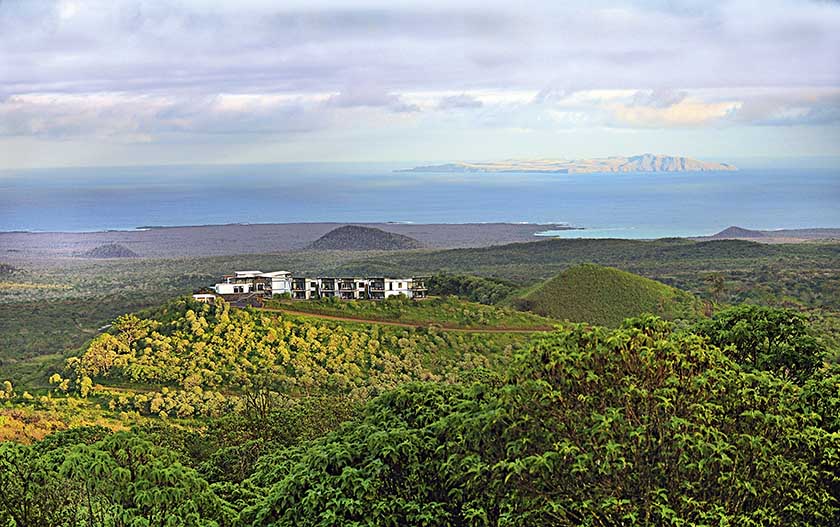
Three-night Exploration Package, full-board, from £5,560. pikaialodgegalapagos.com
Subscribe and view full print editions online... Subscribe